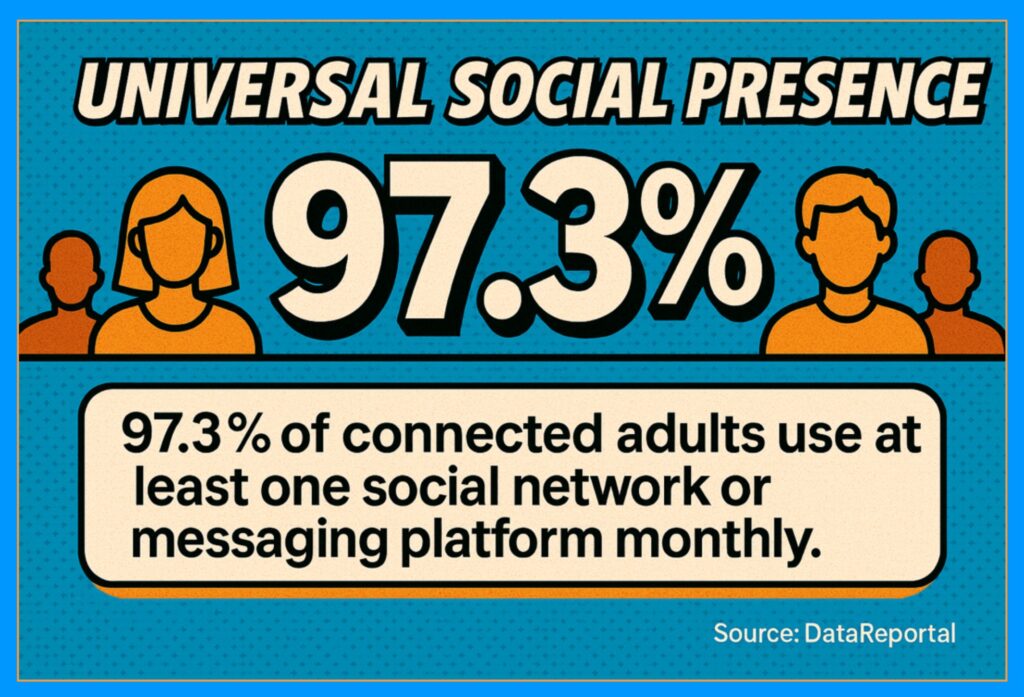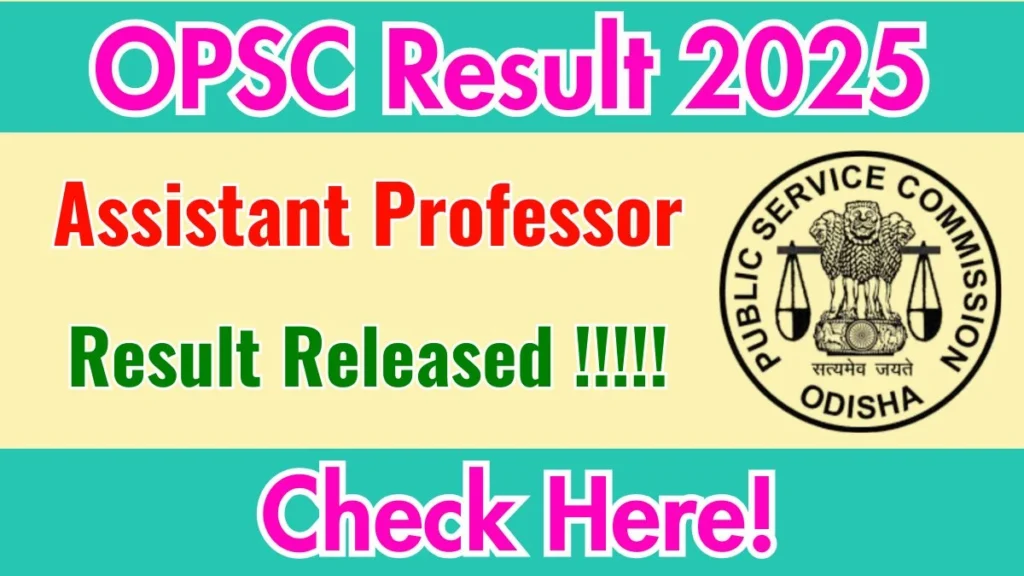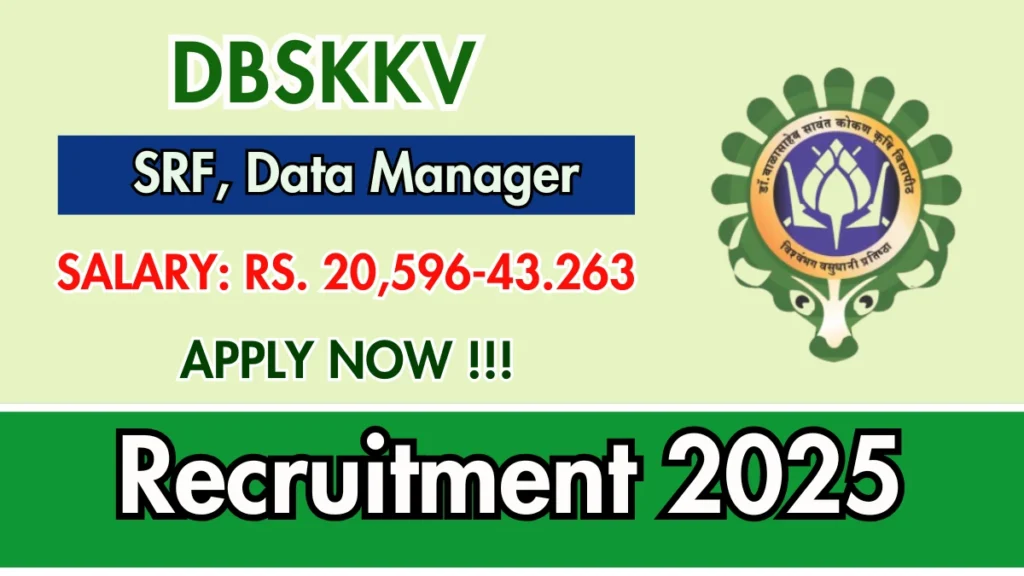By Social-Hire.com
Your personal social media profiles represent more than just a space for sharing holiday photos and connecting with friends. They’re now powerful tools for career advancement and professional opportunity creation. With 5.24 billion active social media user identities worldwide, representing over 60% of the global population, these platforms have become essential networking hubs. (Source: DataReportal)

Many professionals miss opportunities by treating personal and professional social media as completely separate worlds. This creates a disconnect that limits your visibility and reach. A strategic approach changes everything.
We’ve helped numerous B2B professionals transform their social media presence into opportunity-generating machines. Our experience working with recruitment agencies, consulting firms, and professional service providers has shown us what works.
The Intersection of Personal Social Media and Professional Success

Social media has transformed how professionals connect and discover opportunities. The numbers tell a compelling story about this shift. With 97.3% of connected adults using at least one social network or messaging platform monthly, your audience is undeniably present on these platforms. (Source: DataReportal)
Traditional networking now extends into digital spaces. Recruiters, potential clients, and business partners all use social media to find and evaluate talent. Your profiles create first impressions before you ever meet face-to-face.
This shift benefits proactive professionals. Those who strategically position themselves gain visibility that was previously impossible. The key lies in understanding how to blend personal authenticity with professional positioning.


The statistics above highlight why personal social media now plays such a crucial role in professional advancement. Americans spend 31 minutes daily on Facebook alone, creating numerous opportunities to build your professional presence. (Source: Exploding Topics)
Why Employers and Clients Check Personal Profiles
Employers increasingly view personal social media as a window into a candidate’s character. They look beyond formal qualifications to assess cultural fit and communication style. This practice has become standard across industries.
For business development, personal profiles often create stronger connections than company accounts. People prefer engaging with individuals rather than brands. Your personal posts may reach prospects who ignore corporate content.
The boundary between personal and professional has blurred. This creates both risks and opportunities depending on how you manage your online presence. Strategic professionals turn this reality into an advantage.
Creating a Strategic Personal Brand on Social Media
Personal branding requires intention. Random posting won’t build a cohesive professional image that attracts opportunities. Start by defining what you want to be known for professionally.
Your target audience determines which platforms deserve your focus. Different industries cluster on different networks. Legal professionals gain more traction on LinkedIn and Twitter / X than on TikTok or Instagram. Know where your audience spends time.
Consistency matters more than frequency. Regular, valuable posts outperform sporadic content bursts. Create a sustainable posting schedule that works with your professional responsibilities.

This platform comparison helps you focus your efforts where they’ll create the most professional impact. With 5.56 billion individuals (67.9% of the global population) now using the internet, choosing the right platforms for your industry becomes essential. (Source: Statista)
Defining Your Professional Identity Online
Your online professional identity needs clarity. Can someone understand what you do and who you serve within seconds of viewing your profile? Vague descriptions create missed opportunities.
Visual consistency helps recognition across platforms. Use the same professional photo, similar colour schemes, and consistent naming conventions. This builds a cohesive brand presence that people remember.
Balance professional focus with personal authenticity. The most effective social media personalities show expertise while revealing enough personality to seem approachable. This combination builds both credibility and connection.
LinkedIn: Your Primary Professional Platform
LinkedIn stands as the foundation of most professional social media strategies. With 253 million social media users active in the United States in early 2025 (73.0% of the U.S. population), LinkedIn represents your most direct path to professional visibility. (Source: DataReportal)
Your profile serves as your professional homepage. Optimise every section to reflect your expertise and career goals. Complete profiles receive significantly more views and opportunities than partial ones.
The algorithm rewards engagement. Simply posting content isn’t enough – you must also respond to comments and participate in relevant discussions. This activity makes your profile more visible to potential employers and partners.
- Headline optimisation: Go beyond your job title to describe the value you provide
- About section: Tell your professional story with specific achievements and expertise areas
- Experience details: Highlight results and metrics, not just responsibilities
- Skills endorsements: Prioritise skills relevant to your desired opportunities
- Recommendations: Request specific recommendations highlighting key strengths
Content That Performs Best on LinkedIn
LinkedIn rewards certain content types with higher engagement. Original insights based on professional experience typically outperform shared links. Your unique perspective adds value to the platform.
Document your professional journey. Share challenges, learnings, and milestone achievements. These authentic posts often generate more engagement than purely educational content. People connect with stories and experiences.
Timely reactions to industry news demonstrate awareness and thought leadership. When major developments occur in your field, adding your professional perspective positions you as an engaged insider. This attracts attention from others in your industry.
Beyond LinkedIn: Leveraging Other Social Platforms
While LinkedIn dominates professional networking, other platforms offer unique advantages. Each platform has distinct audience demographics and content preferences. Understanding these differences improves your strategic approach.
Twitter (X) excels for real-time industry conversations. Its public nature allows you to engage directly with thought leaders and potential connections without prior relationships. Strategic commenting puts you on the radar of influential figures.
Visual platforms showcase different professional strengths. Instagram works well for design portfolios, event speaking, and workplace culture. These visual elements complement the text-heavy focus of LinkedIn.


These platform-specific features create unique professional opportunities when used strategically. With people spending an average of 2 hours and 24 minutes daily on social media, diversifying across platforms can expand your professional reach. (Source: Exploding Topics)
Cross-Platform Strategy for Professionals
Cross-platform presence requires content adaptation. The same message needs different formats for each platform. LinkedIn posts can become tweet threads, and video content can be optimised for multiple platforms.
Time management becomes crucial with multiple platforms. Focus on quality over quantity and consider using scheduling tools. Consistent presence on two platforms exceeds sporadic activity across five.
Each platform reveals different aspects of your professional identity. Twitter / X might showcase your industry knowledge while Instagram highlights your speaking engagements or workplace culture. Together, they create a comprehensive professional portrait.
Content Strategies That Attract Opportunities
Strategic content creates professional visibility. Random posting rarely generates meaningful opportunities. Plan content that demonstrates your expertise and addresses your audience’s needs.
The most effective professional content educates. Teaching what you know positions you as an expert while providing genuine value to your network. This approach builds both visibility and goodwill.
Content formats should match your strengths and industry expectations. Written posts work well for some professionals, while others gain more traction through video or visual content. Experiment to find what works for you.

Creating content that resonates with your professional audience drives engagement. With 46% of Americans prioritising user-generated social media content over movies and TV on streaming services, quality professional content has a ready audience. (Source: Exploding Topics)
Creating a Sustainable Content Calendar
Content consistency requires planning. Create a simple calendar mapping out key topics and posting times. This prevents the common pattern of enthusiastic starts followed by long silences.
Balance promotional and value-giving content. A good rule follows 80% educational or engaging content with 20% more direct promotion. This ratio builds trust before asking for professional engagement.
Repurpose content across platforms to maximise efficiency. A single insight can become a LinkedIn article, a tweet thread, and talking points for a video. This approach multiplies your impact without multiplying your workload.
Building Your Professional Network Online
Strategic networking focuses on quality over quantity. Having 500+ random connections provides less value than 50 meaningful professional relationships. Target connections who align with your professional goals.
Active engagement builds stronger connections than passive following. Comment thoughtfully on others’ content before expecting engagement with yours. This reciprocity principle underlies successful social networking.
Online connections should evolve toward real professional relationships. Move conversations from public comments to direct messages, then to video calls or in-person meetings when possible. This progression deepens professional connections.
- Strategic connection targeting: Focus on decision-makers and peers in your industry
- Engagement first approach: Support others’ content before promoting your own
- Value-based outreach: Personalise connection requests with specific shared interests
- Consistent relationship nurturing: Maintain regular, meaningful interactions
Converting Online Relationships to Opportunities
Social media connections require activation to generate opportunities. Simply being connected rarely leads to professional outcomes. Regular, valuable engagement keeps you top-of-mind.
Direct messages work best when preceded by public engagement. Comment on someone’s posts several times before sending a private message. This establishes familiarity and reduces the feeling of a cold outreach.
Always focus on mutual benefit when seeking opportunities. Approach connections with “how can we help each other” rather than just seeking advantages for yourself. This reciprocity mindset leads to stronger professional relationships.
Measuring Your Personal Social Media Impact
Measuring impact keeps your strategy focused. Track metrics that connect to your professional goals, not just vanity statistics. Growing followers matters less than growing relevant engagement from your target audience.
Different goals require different metrics. Job seekers should track profile views and recruiter connections. Business developers should monitor conversation starters and meeting requests. Customise tracking to your specific objectives.
Regular analysis reveals what’s working. Review your most successful posts monthly to identify patterns. Which topics, formats, and posting times generate the most meaningful engagement? This data should inform your future strategy.

Measuring the right metrics helps optimise your social media strategy for professional goals. This approach ensures your daily average of 2 hours and 24 minutes on social media translates to career advancement rather than just consumption. (Source: Exploding Topics)
Connecting Social Activity to Professional Outcomes
Social media work should connect to real outcomes. Track how online activities translate to interviews, meetings, client calls, or other tangible results. This connection justifies the time investment.
Ask new contacts how they found you. This simple question reveals which platforms and content types generate the most valuable connections. The answer often surprises people and reshapes their strategy.
Adjust your approach based on results. If LinkedIn generates more opportunities than Twitter, shift your time accordingly. Data-driven decisions improve your return on time invested in social media.
Common Mistakes to Avoid When Using Personal Social Media Professionally
Inconsistency undermines professional branding. Sporadic activity followed by silence creates an impression of unreliability. A modest, consistent presence builds more professional credibility than occasional bursts.
Inappropriate content mixing creates professional risk. While authenticity matters, certain personal content can damage professional perception. Establish clear boundaries for what you share on profiles visible to professional contacts.
Neglecting privacy settings causes preventable problems. Review your settings regularly, especially on platforms where you share more personal content. Control who sees what to maintain appropriate professional boundaries.
- Platform misalignment: Focusing on platforms where your audience isn’t active
- Broadcasting vs. engaging: Only posting your content without interacting with others
- Inconsistent messaging: Presenting contradictory professional identities across platforms
- Neglecting bio/profile sections: Leaving key professional information incomplete
Finding the Right Personal-Professional Balance
Complete separation between personal and professional lives isn’t necessary. Sharing appropriate personal elements makes you relatable. The key is strategic choice about what personal content supports your professional image.
Different industries have different expectations. Creative fields generally accept more personal expression than traditional corporate environments. Understand your industry’s unwritten rules about social media presence.
When in doubt, delay posting. Content that feels questionable probably is. Take time to consider how various audiences might perceive your post before sharing. This simple pause prevents many social media missteps.
Your Strategic Social Media Action Plan
Personal social media offers an unprecedented professional opportunity. With 5.24 billion active social media user identities worldwide, these platforms connect you to decision-makers and opportunities globally. (Source: DataReportal)
Success requires strategic intention. Random posting rarely generates professional results. The frameworks and approaches in this guide provide a roadmap for effective professional positioning.
Start with one platform. Master LinkedIn before expanding to other networks. This focused approach yields better results than diluting your efforts across multiple platforms simultaneously.
Remember that social media complements, not replaces, traditional networking. The most successful professionals blend online visibility with in-person relationship building. Each strengthens the other.
Ready to transform your personal social media into a professional opportunity engine? We help professionals like you develop and implement social strategies that deliver measurable career advancement and business development results. Book a strategy call today to discuss your specific goals.






